ANTHONY ADDAMS researches these small sailing craft
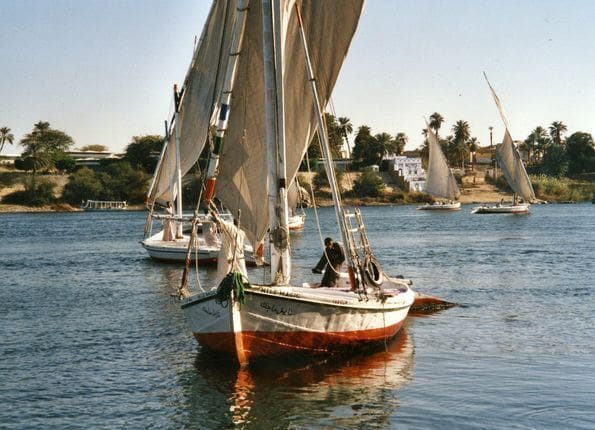
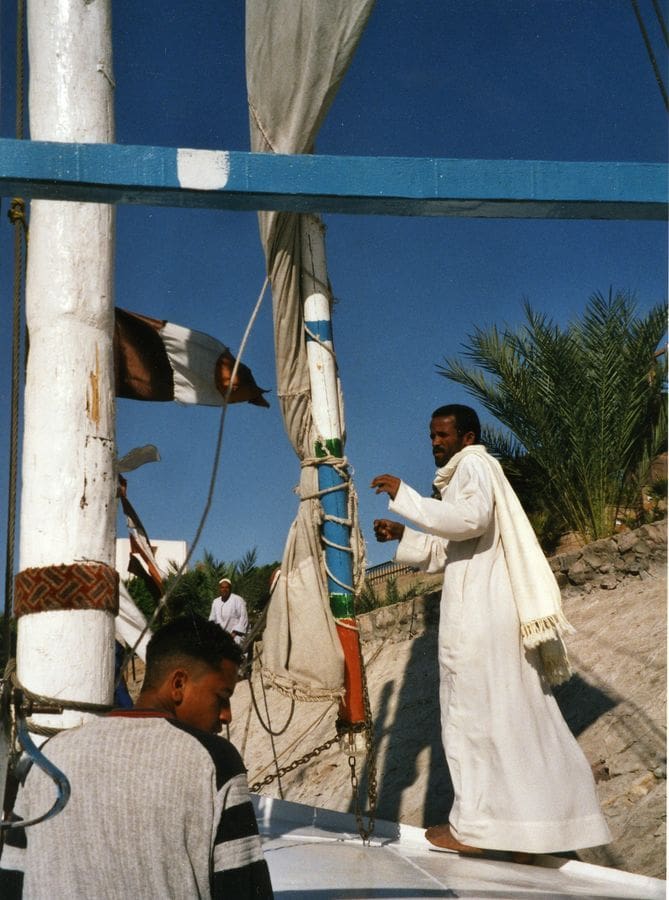
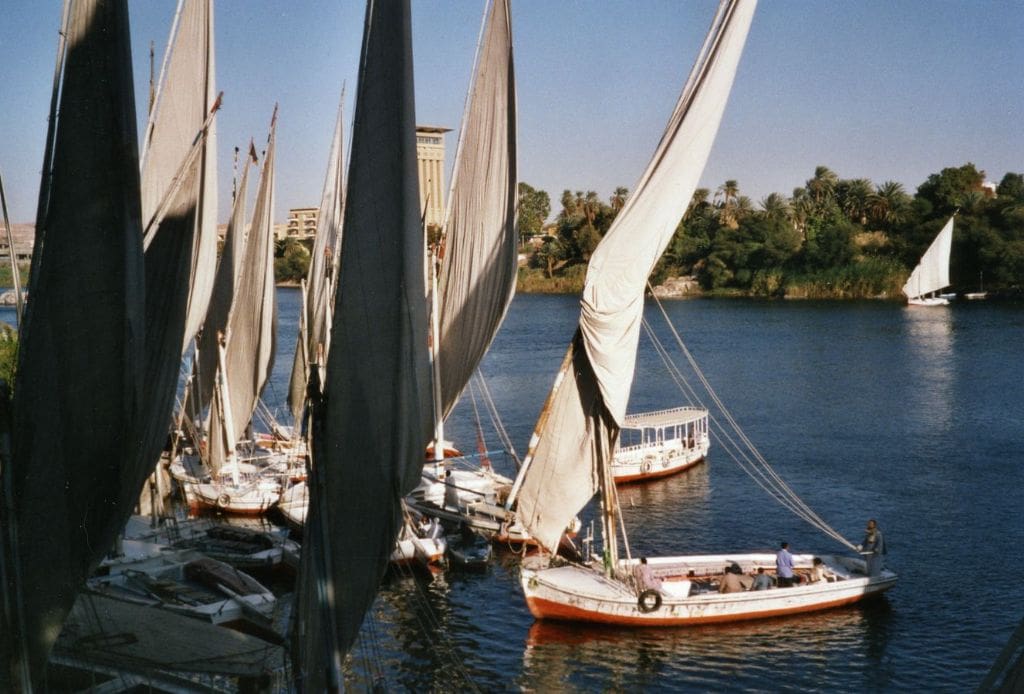
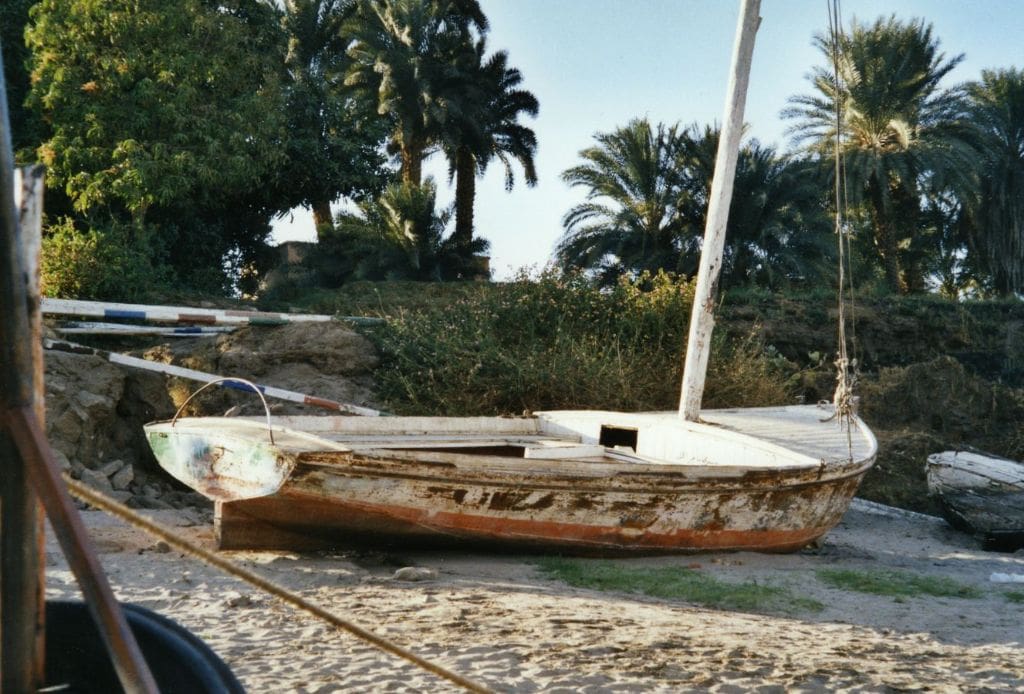
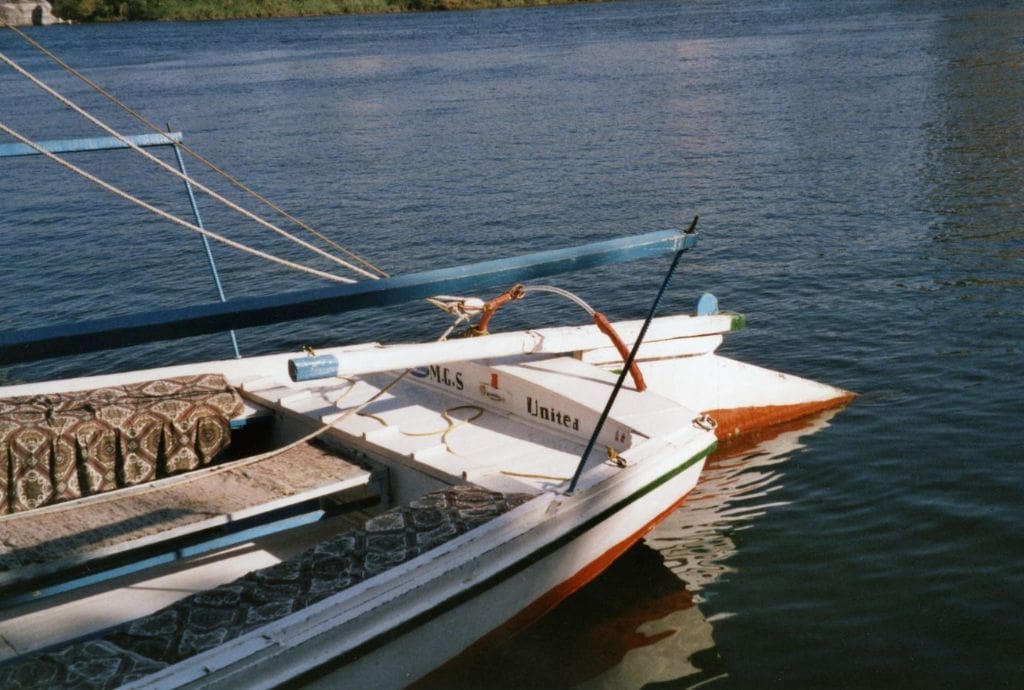
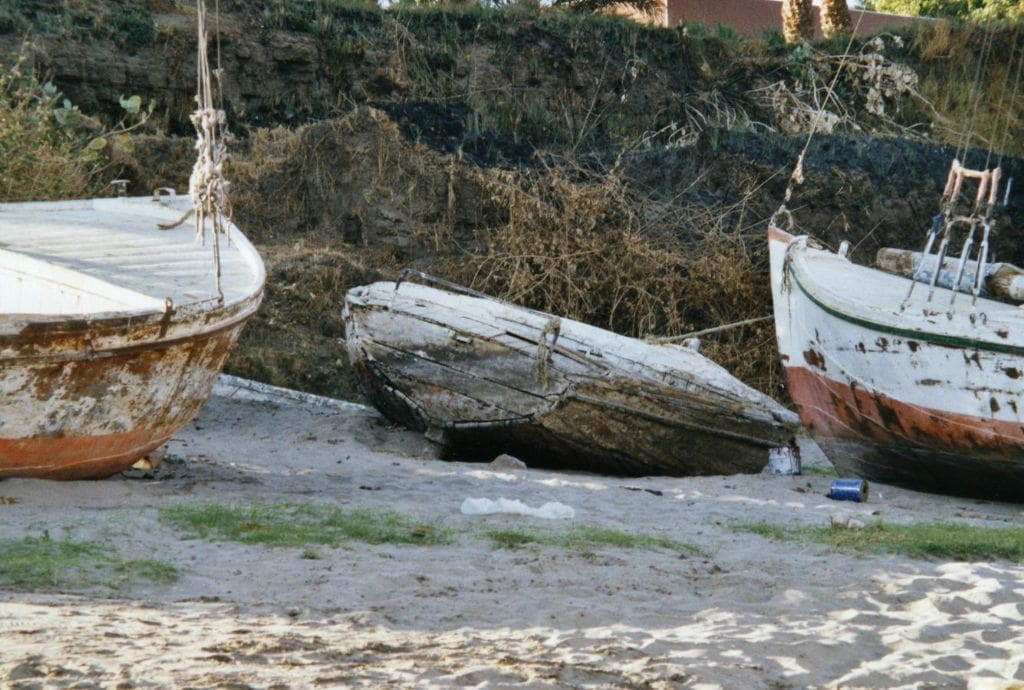
The Nile is home to feluccas that flitter about busily like butterflies, so please read on and enjoy an armchair sail.
Have you been to Aswan? If you have, then you will probably have been struck by the beauty of seeing graceful white sail feluccas ghosting across the tranquil waters of the Nile. If you have not been there, then all I can do is to recommend a cruise on the Nile. On the river you will see scenes little changed from biblical times including a variety of old craft and both small and large feluccas. Some six hundred miles upstream from the Nile Delta is the town of Aswan where the river is a mile wide. Just upstream is the first cataract, a forbidding jumble of massive black rocks, blocking the river to further navigation upstream. In the tranquil waters below the cataract, tourists are ferried in small sailing feluccas across the river and between the beautiful islands with a backdrop of golden sandy cliffs. These feluccas carry a dozen or more passengers with a smiling bare footed Egyptian clad in a voluminous white ankle length garment, called a ‘Galabeya’. You will see him standing at the stern as he deftly handles the mainsheet of the great lateen sail whilst steering with one foot on the tiller. It really is a very enjoyable way to travel, and if you go in February the temperature is a dry and comfortable 75 to 80 degrees C.
Enjoy more Model Boats Magazine reading in the monthly magazine.
Click here to subscribe & save.
The hull design of a typical felucca
Photos 1, 2 and 3 give you an idea of the boats and Egyptian boatmen. Feluccas such as these are made today with a steel hull of welded sheets shaped like planks, invariably painted white, with orange below and some touches of green and blue as decoration. The internal fitting out is in white painted wood. Fitted with a single mast, the sail is rigged as a lateen with a boom to the lower edge of the sail, which can be quickly gathered up to the long spar when the boat arrives at the sandy shore or landing stage.
Photo 4 shows a steel hulled boat on shore allowing a full view of the hull and stern shape and Photo 5 is of the typical long tiller and rudder. The Nile has a shifting sandy bottom, so the rudder is no deeper than the wide shallow hull and therefore a long rudder is the only solution to achieve the necessary turning effect with such a great area of sail. This picture also shows the thwarts and the central table or platform which is normally used without disturbing passengers as a convenient route for the boatman to quickly walk forward when beaching the boat and if attending to the sail. Carpeting on the thwarts provides some comfort for passengers. There is a steel centreboard (not in the photo) which can be raised and lowered quickly. Photo 6 shows, between two rusting hulls, a much older boat constructed from wood. The carvel planking and planked transom can just be made out as the paintwork has deteriorated to give a clear view of the construction. You may have noticed that the hull design of all these Nile feluccas, but not the rig, seems to be northern European, bearing no resemblance to middle eastern traditions, where usually the hulls are pointed at both ends. I have read that this hull shape dates from the time when Napoleon brought his army to colonise Egypt, and then Nelson sank his fleet at the Battle of the Nile in 1798. As a result, the French army was then completely cut off from any means of transport back to France. It is said that the Egyptians liked the hull construction of the many small boats with a transom stern brought by the French and British. If you think about it, the smaller Nile feluccas of today have a conventional dinghy hull, with a Mediterranean lateen rig.
Feluccas in the 1830s
In 1837, a British artist called David Roberts, travelled to Egypt to visit all the principle sites of ancient Egypt and the Holy Land. He then proceeded to draw very carefully and as accurately as he could the beautiful temples and other views of interest in order to compile magnificent folio editions of his recorded travels on his return to England. This was before the age of photography and when exhibited and published, Robert’s work excited so much interest it encouraged the start of tourism and archaeological expeditions to Egypt and the ancient civilisations of the Middle East. To give his paintings scale he included people, and in river scenes he liked to include boats. Photo 7 of one his drawings clearly show such a boat in use at that time. To illustrate the comparison between the transomed stern boats and a traditional design, I have included Photo 8 showing a typical larger felucca, mast lowered and with a cabin, used by Roberts on his travels. I am intrigued by the guy on the tiller apparently steering with great concentration. I know some modellers like to include people with their boats, so here is a challenge for you, Photo 9, is a close up showing men and women relaxing on board.
Cargo carrying feluccas
As a contrast coming back to present times, Photo 10 is of a single masted cargo carrying felucca and Photo 11 shows a felucca with two masts seemingly in a very dilapidated condition that I photographed in 1996. Just look at the mass of holes in those sails. Such working boats benefit from the generally southerly wind, which dies away at dusk. The current then assists boats when heading downstream in a northerly direction. The height of the tall lateen rig does not present any problem as there are no bridges across the Nile, except for a few high level modern crossings.
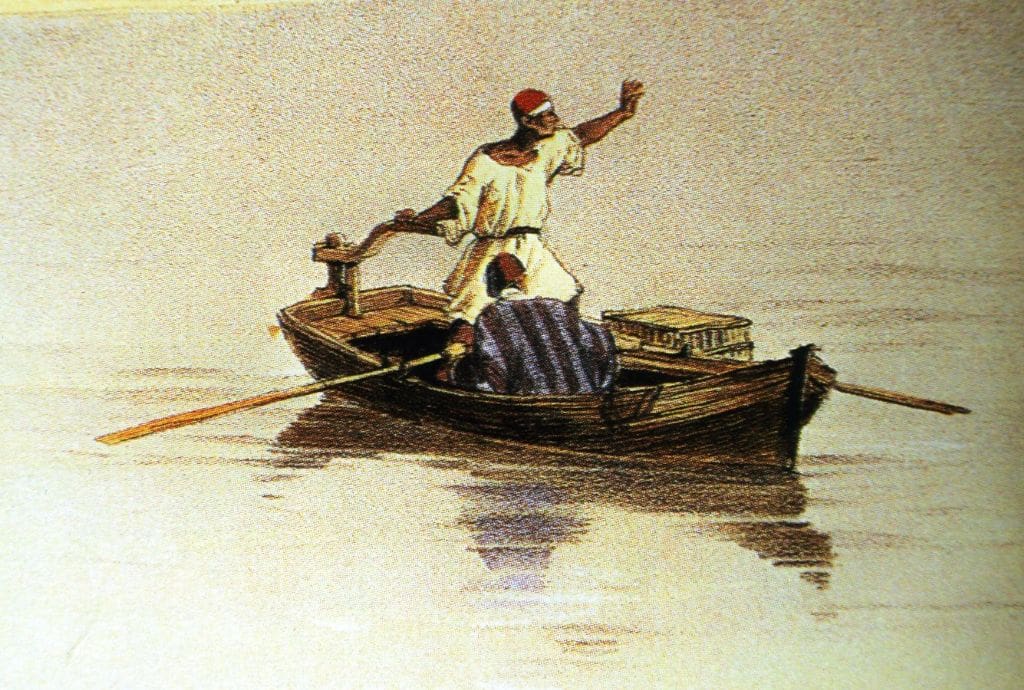
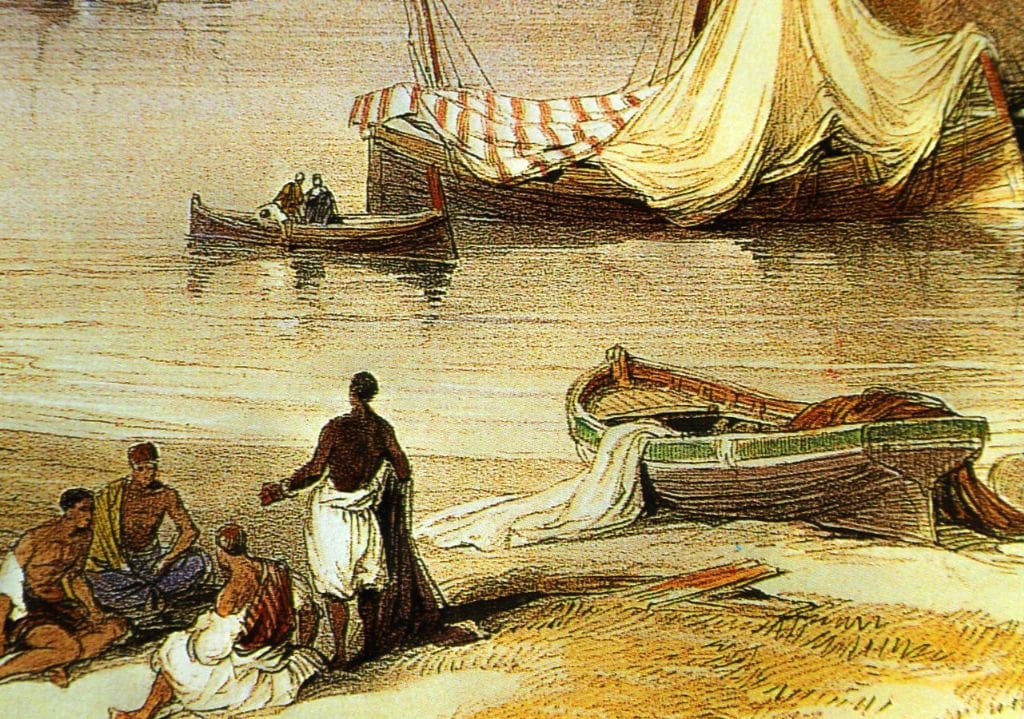
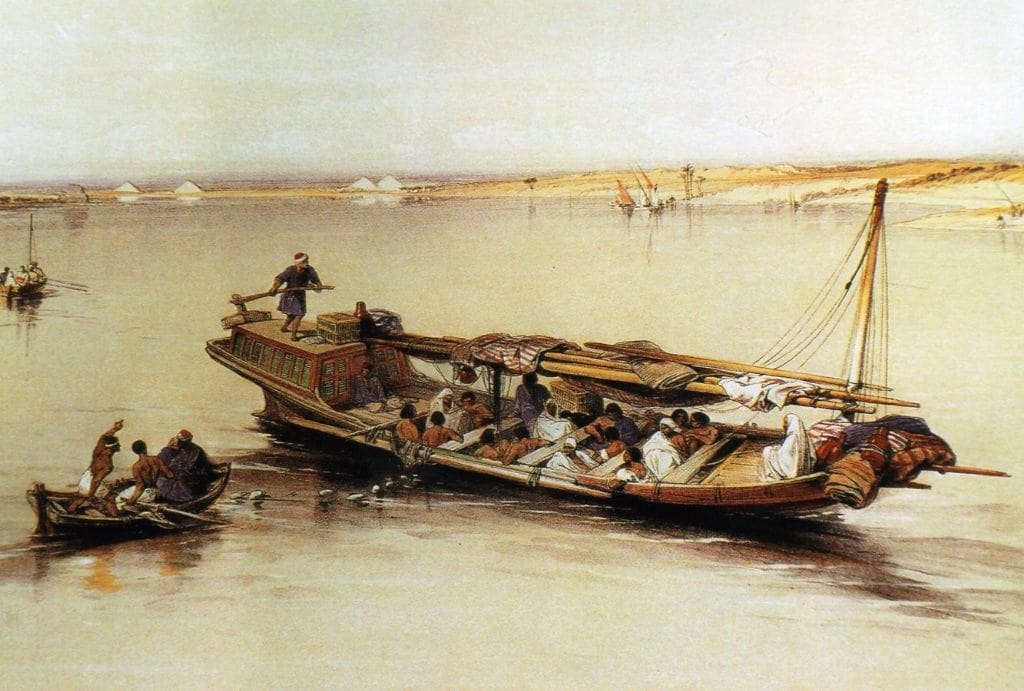
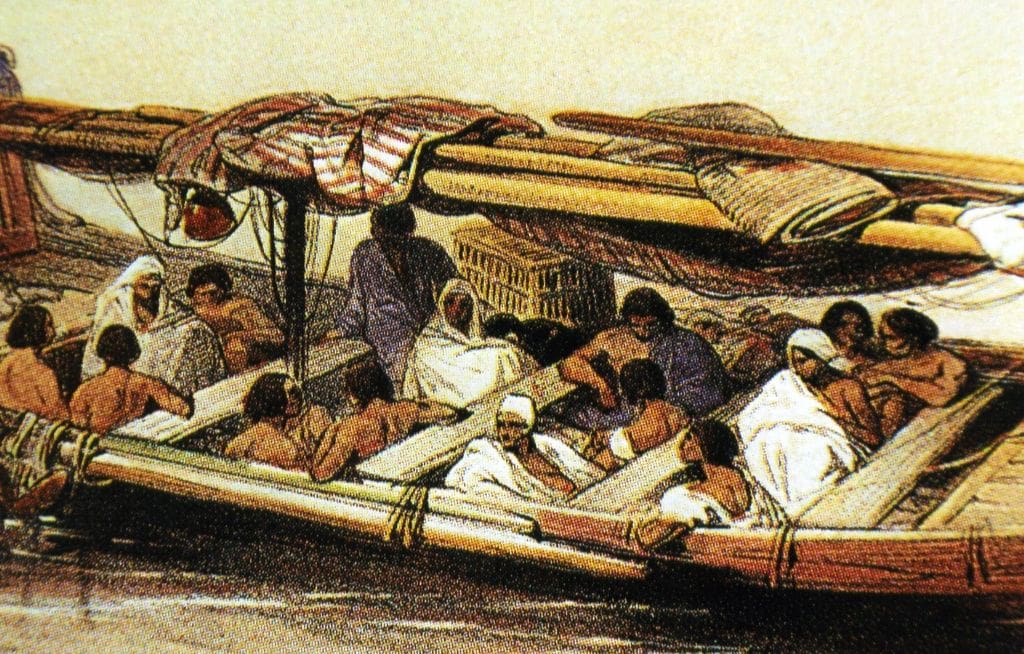
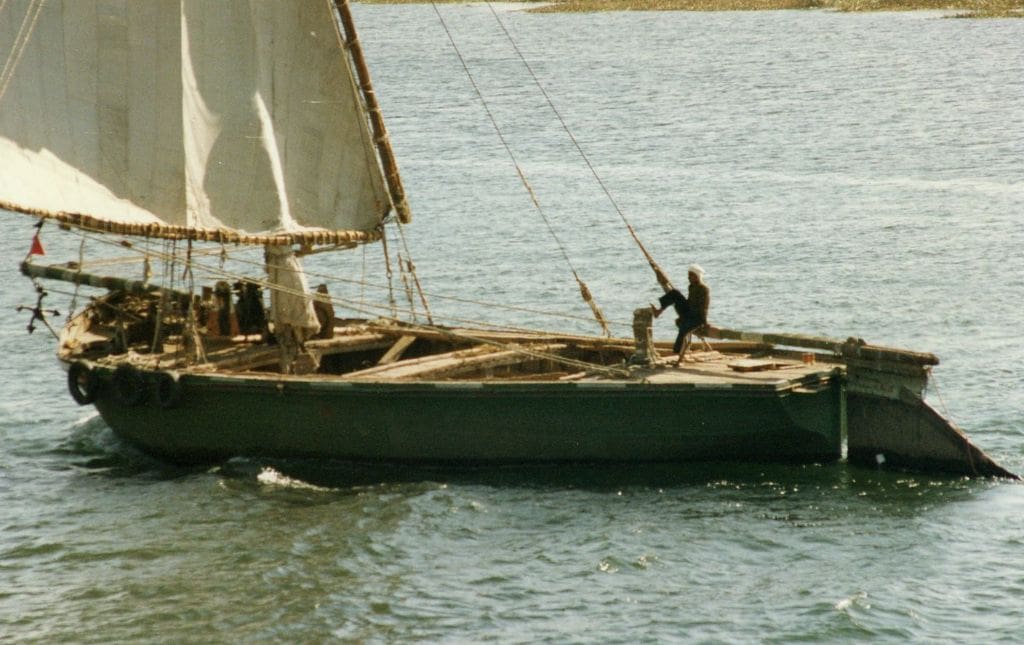
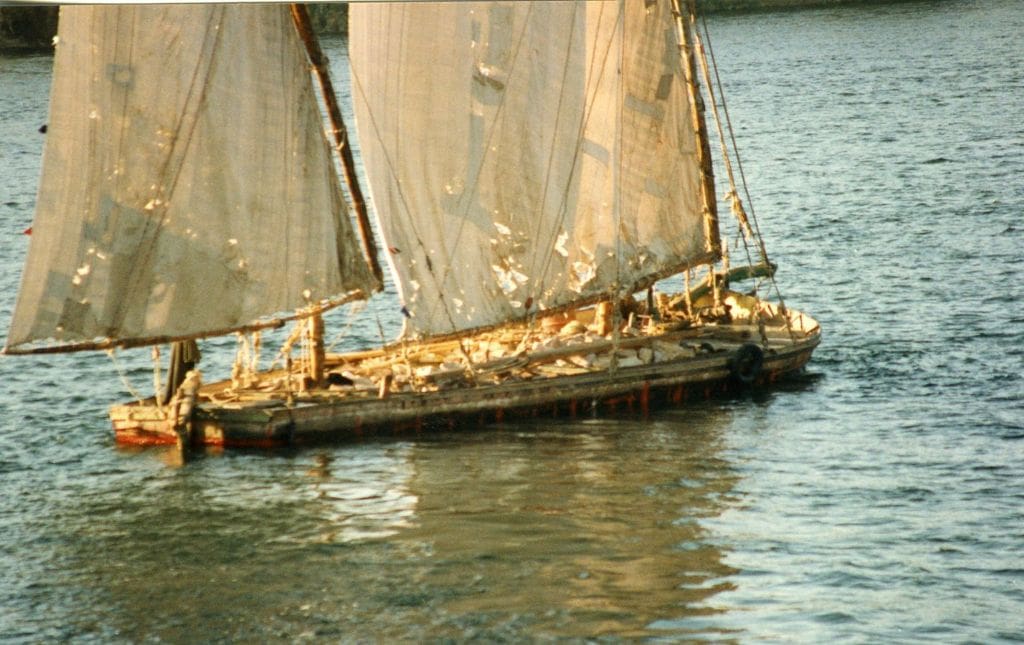
Recording constructional details
I like to record with notes, quick sketches and photographs, any old working boats when I come across them. This allows me to feel I have made the most of an opportunity that may not be possible again. So I have tidied up my own sketches and prepared a lines drawing. Figure 1 shows the section and plan, and hull half moulds for a 20ft Nile felucca. One of the old timber boats I saw had just six wide planks each side for the hull, whilst another that I saw, had 16 each side. Figure 2 is a general arrangement sketch showing the thwarts, centre table or platform, and other details. Figure 3 is a side view giving the relative dimensions of hull, mast and spars. With a hull length of 20ft, the mast is 11ft 3ins. above the deck. The two spars lashed together for the lateen rig are 25ft 2ins long, and the boom is 11ft 5ins. Remember there is no right or wrong about these dimensions and details, boats would vary between builders; spars for example, may have come from other boats. Talking about spars, Figures 4 and 5 are my record of the mast and spar rigging arrangements. The main spar is made up of two lengths of timber lashed together. Oars are stored up the side of the mast, which has footholds nailed on to enable easy climbing. The mast has the same diameter all the way up. The sails are made of traditional native cotton. Figure 6 shows details of the long rudder.
Figure 7 gives a view of the hatch that slides to the right for access below the fore deck and Figure 8 is a view of the centreboard. There is no engine and I did not see any boats fitted with an outboard motor.
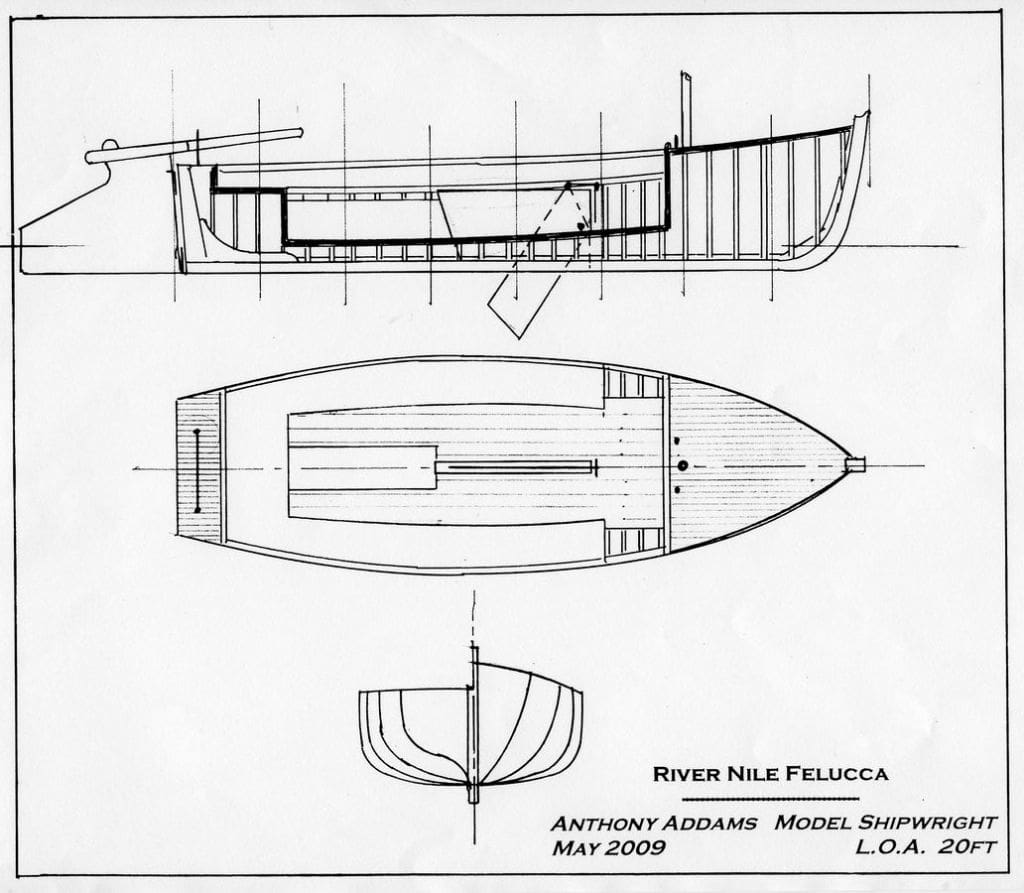
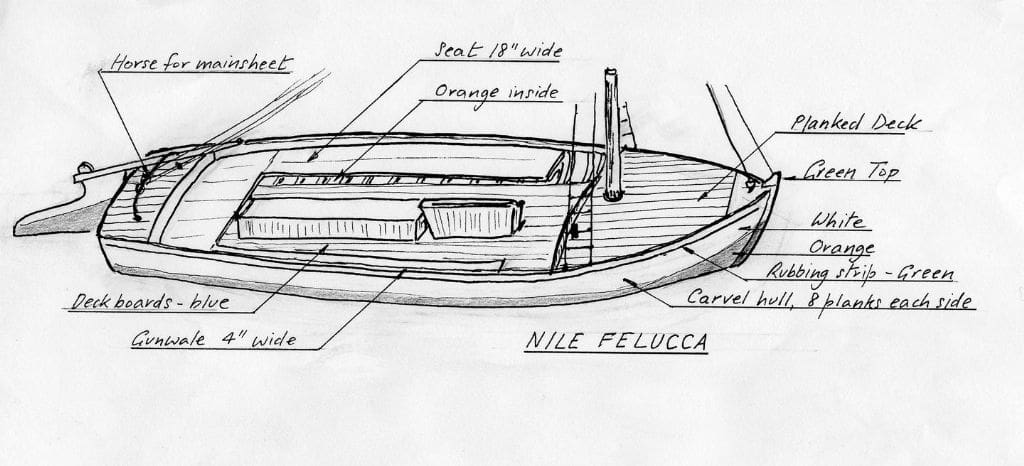
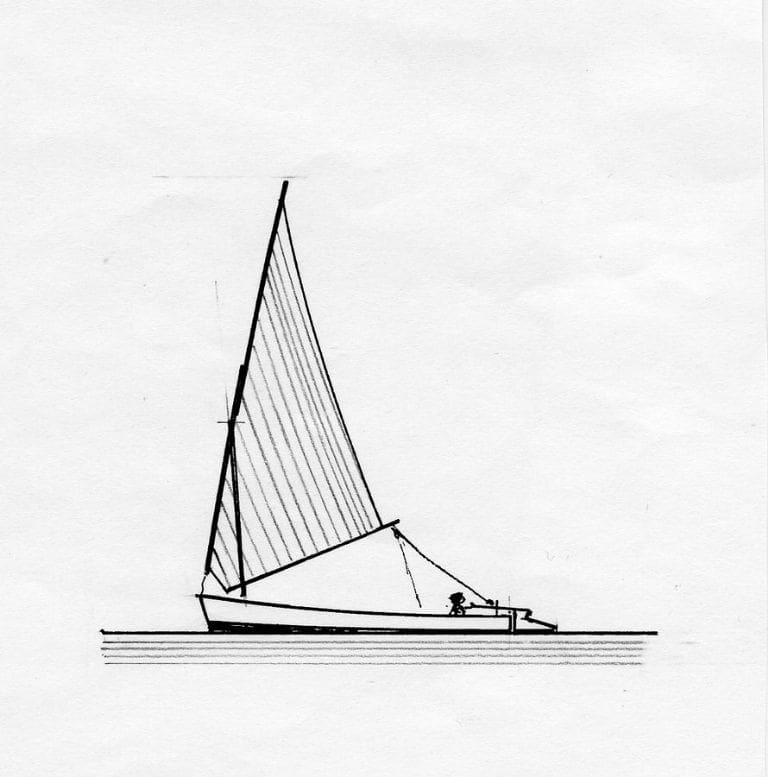
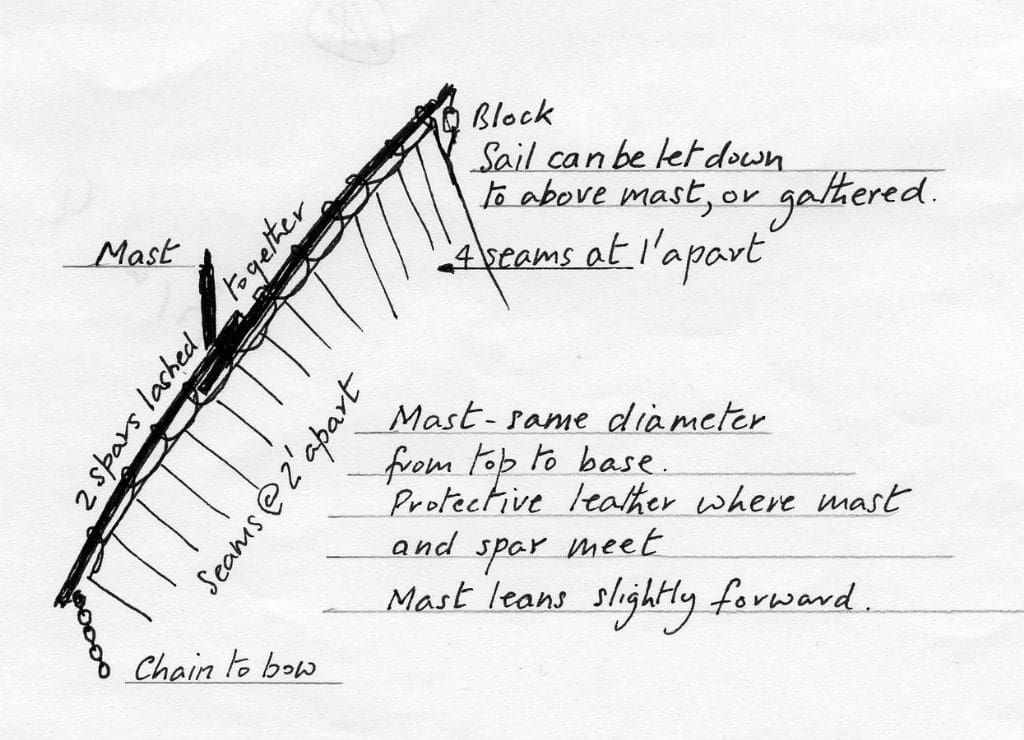
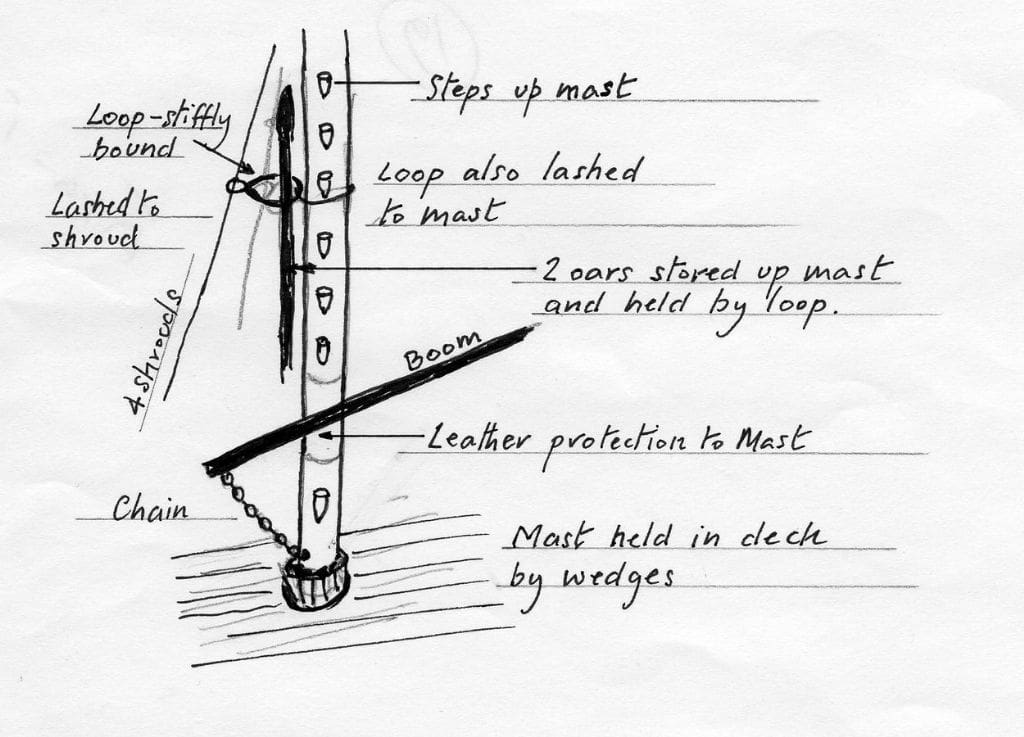
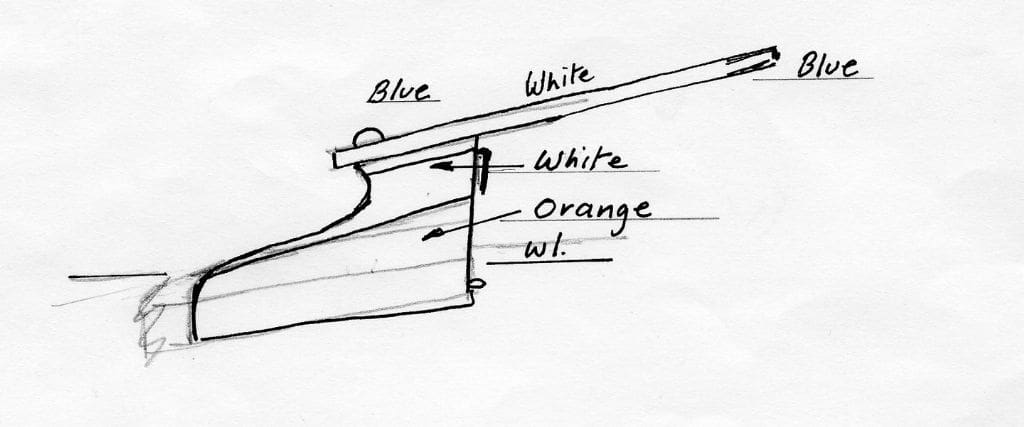
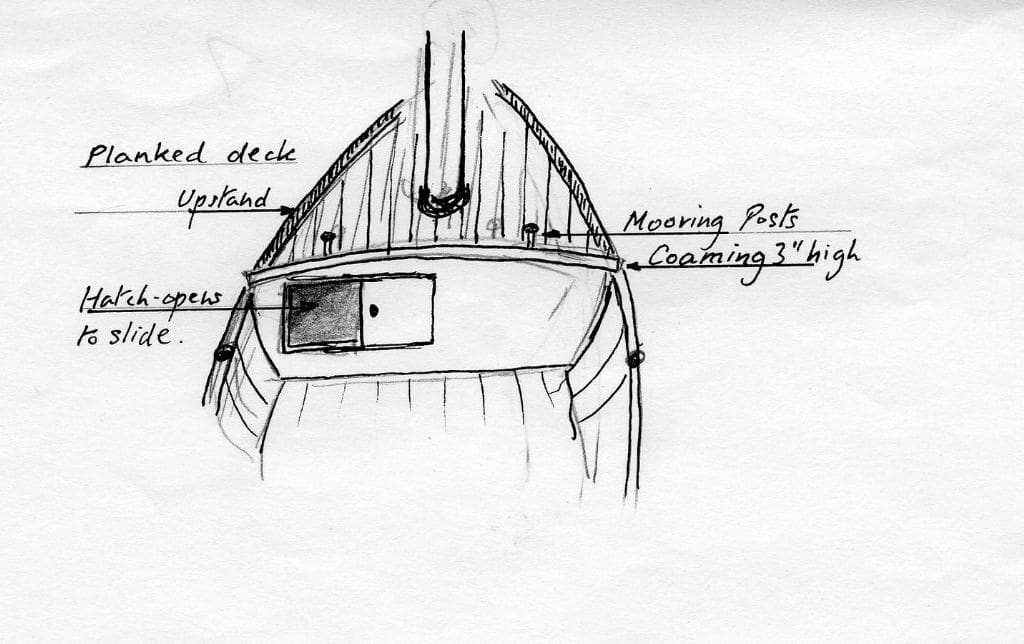
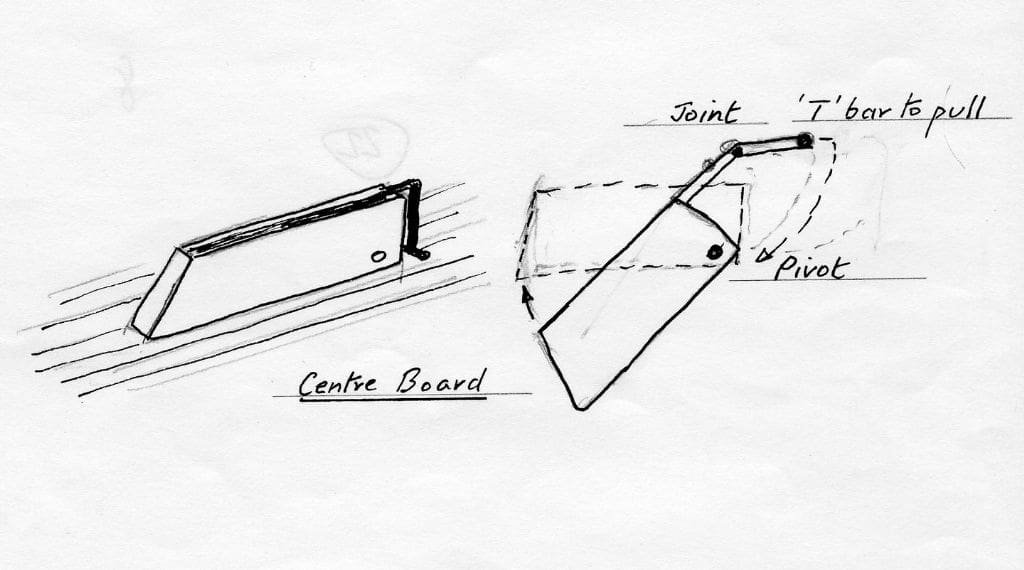
To back up the sketches I made, here are some more pictures that I took for my research. Photo 12 is a clear side view showing the hull with the colour division between the white and orange, which is well above the waterline. This picture shows how quickly and easily a lateen rig can be furled. The mast head and rigging are shown in Photo 13 and in Photo 14 the wedges at deck level holding the mast steady and the door to the fore compartment are shown. The plank in the foreground is a boarding plank. The handle for pulling up the centreboard is also just visible, bottom right.
Nile feluccas in contemplation
Finally in Photo 15 we can see feluccas and boatmen towards the end of the day, waiting for work. Perhaps the men are just enjoying the tranquility of this serene river?
It is my hope that the foregoing will prove useful to anyone interested in these elegant craft and their operation. There are probably sufficient details here to build an authentic model. The larger felucca with the cabin featured in Robert’s paintings would also make a very elegant model. It could be set on a beach with a suitable Egyptian picture behind adding context and atmosphere to make a diorama and one day, I might be tempted to have a go. As they say: ‘Watch this space!’
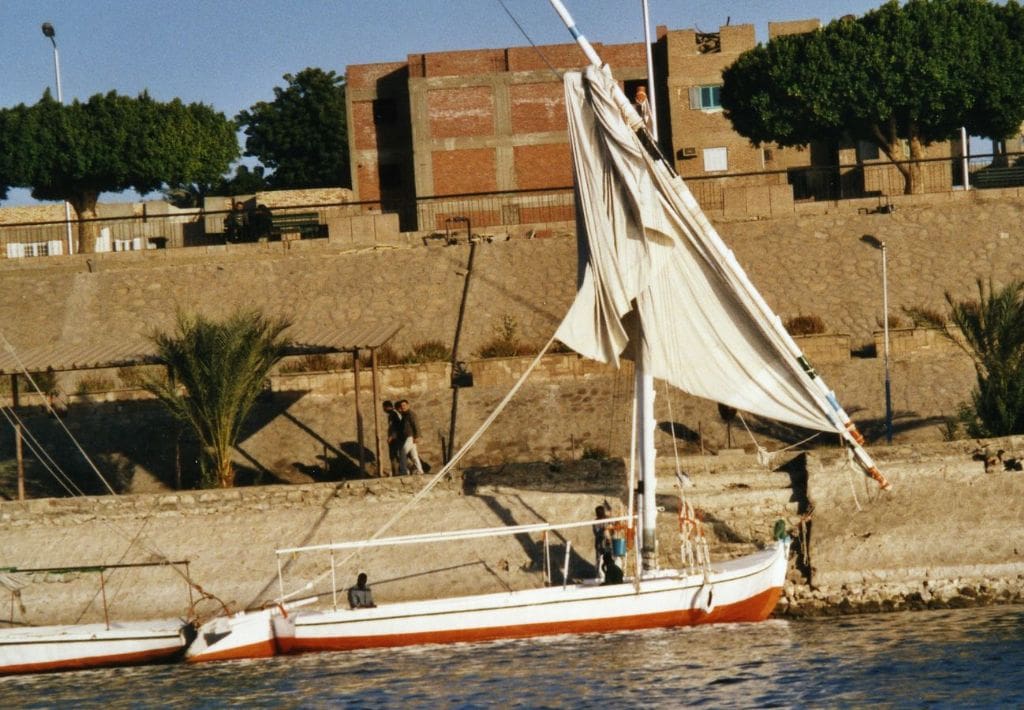
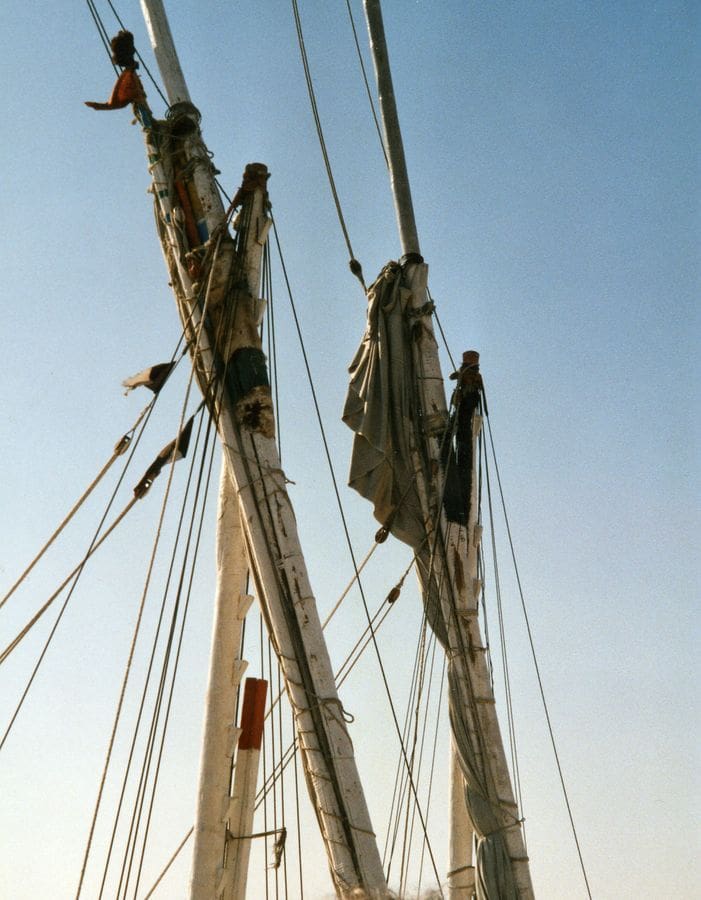
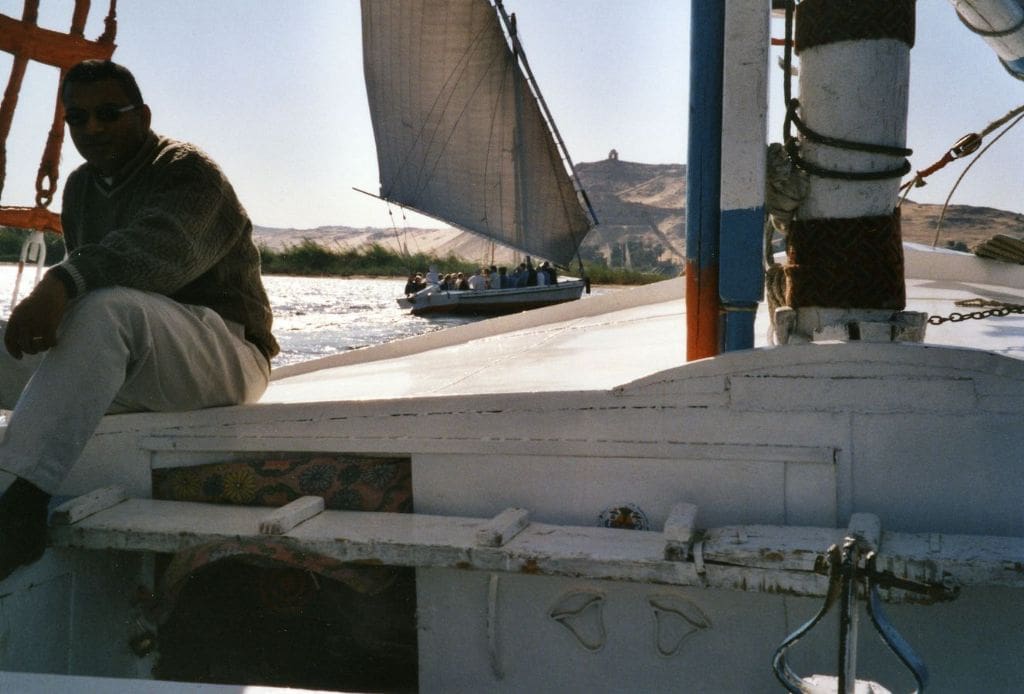
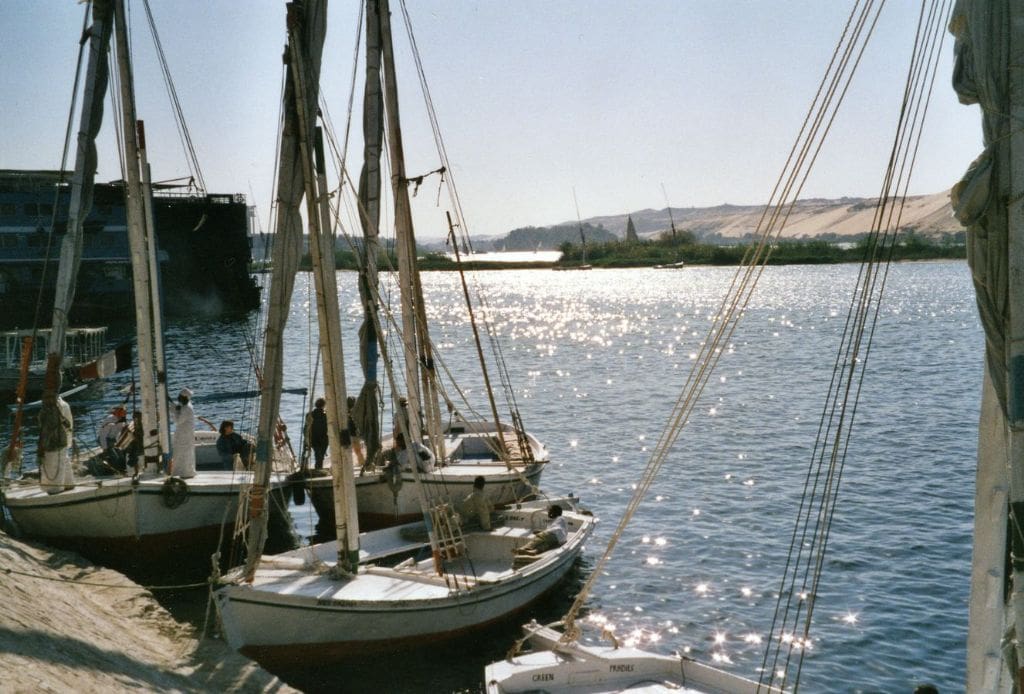
(Acknowledgement: Photos 7, 8 and 9 are of David Roberts’ drawings of the 1830s – Anthony Addams 2009)




